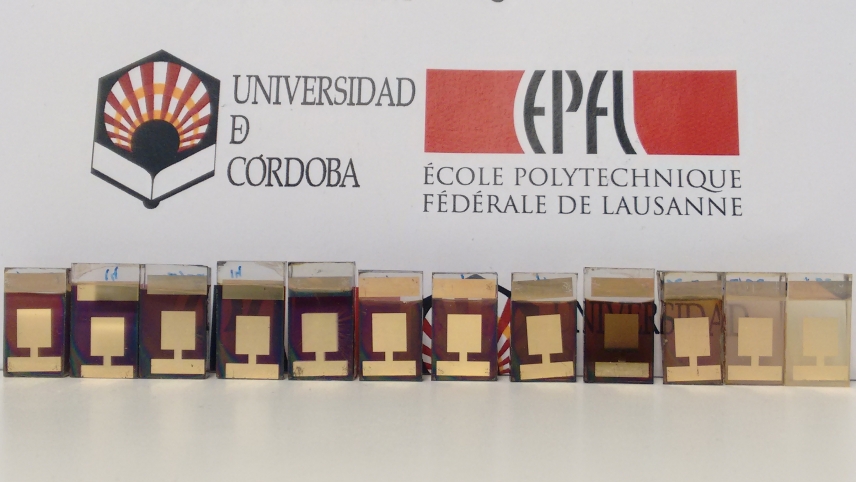 Perovskites are currently the key element in solar-cell development. The use of organic–inorganic lead halide perovskites in a range of solar cell architectures offers simple and low-cost processability together with an efficiency rate similar to that of the silicon cells most widely used at present.
Perovskites are currently the key element in solar-cell development. The use of organic–inorganic lead halide perovskites in a range of solar cell architectures offers simple and low-cost processability together with an efficiency rate similar to that of the silicon cells most widely used at present.
The latest milestone in the energy race is the result of joint research by the University of Córdoba and the ÉcolePolytechniqueFédérale at Lausanne, Switzerland. Researchers have succeeded in stabilising solar cell performance for 1,000 hours in a stress test involving continuous light illumination (equivalent to 1333 days in normal conditions); these cells – cheaper than silicon cells and equally efficient – have a useful life of almost four years.
Stability – the main problem associated with perovskite – was improved by the insertion of a large guanidinium cation (a positively-charged ion) into the crystal structure of the perovskite. Guanidinium is obtained from the oxidation of guanine (a nitrogenated organic compound found in urine). The incorporation of this cation into the perovskite is the innovation reported by researchers Alexander D. Jodlowski, Gustavo de Miguel Rojas and Luis Camacho of the University of Córdoba who are members of IUNAN University Institute of Nanochemistry.
The lack of stability prompted by decomposition over time, due to the sensitivity of perovskite to oxygen and humidity, was significantly improved by the insertion of guanidinium, which thus becomes a promising material for the future development of solar cells.
In order to achieve this result, the research team had to test different proportions. The crystal structure of the perovskite creates a cubic cavity into which the guanidinium cation is inserted with a view to overcoming, as Jodlowski explains, “the Goldschmidt tolerance factor limit of between0.8 and 1, in order to allow the formation of an optimum crystal structure for a photovoltaic cell”.Since guanidinium exceeds the Goldschmidt tolerance factor limit (1.03), a blend of methylammonium and guanadinium had to be used to maintain optimal crystal structure, thus demonstrating that new cation-containing materials can be developed which overcome the tolerance factor limit, resulting in greater efficiency and improved stability.
The energy sector plays a crucial role in financial and environmental terms. The energy saving (and thus the cost saving) associated with the production of perovskite rather than silicon – coupled with perovskite’s flexibility, which enables the manufacture of fully-recyclable non-rigid adaptable solar panels – makes this a promising alternative to today’s silicon cells, once the stability problem has been overcome.
Alexander D. Jodlowski, Cristina Roldán-Carmona, Giulia Grancini, Manuel Salado, Maryline Ralaiarisoa, Shahzada Ahmad, Norbert Koch, Luis Camacho, Gustavo de Miguel, Mohammad Khaja Nazeeruddin. Large guanidinium cation mixed with methylammonium in lead iodide perovskites for 19% efficient solar cells. Nature Energy 08 December 2017. DOI: s41560-017-0054-3


